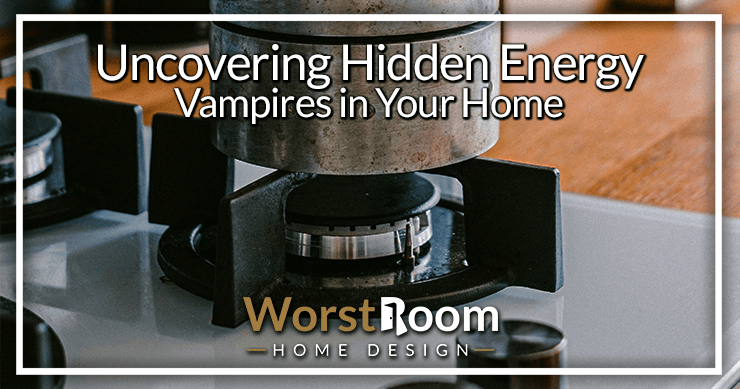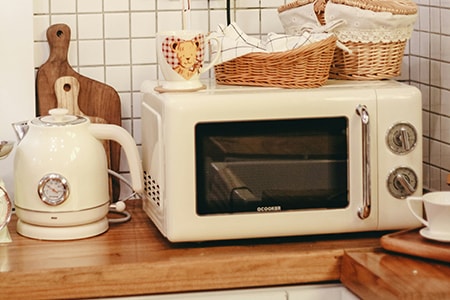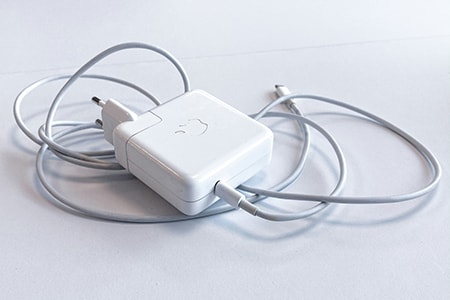Uncovering Hidden Energy Vampires in Your Home
Author: Omar Alonso | Editor: Omar Alonso
Review & Research: Jen Worst & Chris Miller

As energy prices soar across the United States, you might wonder how to reduce costs. Sitting in the dark while eating dinner isn't practical, and running the air conditioner is necessary during the hottest summer days.
You may not realize that several standard household devices and appliances use power even when you've turned them off. Identifying and addressing where energy vampires come from can help you reduce at-home power use and save money.
What Are Home Energy Vampires?
Energy vampires continue drawing power even when devices are shut down or set in standby mode. The most common items include plugged-in laptops, phone chargers, televisions, kitchen appliances and digital clocks.
Although these devices use under 0.5 watts, this adds up over time, increasing your monthly utility bills. The Lawrence Berkeley National Laboratory says phantom loads account for 5% to 10% of residential electricity consumption.
Common Household Energy Vampires

Remote workers might put their computers on hibernate when they clock out for the day, but as long as you keep the device plugged into the wall, it's still using energy. The same happens when you power down the TV or turn off the game console.
Even your cell phone charger will consume 0.1 to 0.5 watts of energy when plugged into the wall without a phone. Other common culprits include:
- Microwaves
- Coffeemakers
- Cable boxes & DVR players
- Printers
- Stereo systems
- Hairdryers & straighteners
- Digital clocks
You're not alone if you are in the habit of always leaving things in outlets. In a survey of 1,000 people, MarketWatch found that 82% of respondents leave electronics plugged in or turned on even if they aren't using them. Another 70% didn't realize how it contributed to their energy bills.
How to Identify Phantom Loads in Your Home
Conducting a home energy audit is a great way to understand your household's power consumption and identify inefficiencies. The first step to identifying energy vampires in your residence is to check all the outlets for warm plugs and adapters.
Heat emanating from plugs and wires likely means they are still drawing power. Look for devices with continuous displays, indicator lights and standby modes. Decide whether you can unplug anything, such as phone chargers or laptops you aren't using.
A Kill-A-Watt meter plugs into the wall and measures power consumption instantaneously in watts. You can measure the energy use patterns over time, but be sure to analyze your most recent electricity bill to establish a baseline.
Practical DIY Solutions to Eliminate Energy Vampires

There are several ways to slay energy vampires at home. The most straightforward solution is to unplug devices when you finish using them to cut the power supply off entirely. Otherwise, switch to smart plugs that enable you to control electricity remotely from your smartphone or tablet. Timers also automatically turn off your devices according to how you program them at a particular hour.
Home upgrades, such as investing in Energy Star-rated appliances, replacing old windows and adding new insulation, also make a difference. Windows with excellent solar heat gain coefficients and U-factors reduce heat gain through glass and improve their insulating properties. You can also apply reflective films to deflect sunlight and avoid a warm house.
Further optimize indoor temperature by installing a programmable thermostat and adjusting its settings to avoid running your HVAC system all the time. According to the U.S. Department of Energy, you can save 10% on heating and cooling by lowering your thermostat by seven to 10 degrees Fahrenheit for eight hours daily. In the winter, you should set your thermostat to 68 to 70 degrees F during the day and lower at night.
Additional ways to save energy and lower costs include:
- Avoid overloading the washing machine and dishwasher.
- Weatherproof all the windows and doors, even with aluminum foil in the meantime.
- Switch off all unused and unnecessary appliances, such as clocks and coffee makers.
- Change HVAC and furnace filters every two to three months or when they appear dirty.
- Replace conventional light bulbs with light-emitting diodes and use natural light when possible.
- Keep your showers short and limit hot water use.
- Use smaller cooking appliances that don't give off a lot of heat, such as portable induction stoves, slow cookers and air fryers, but remember to unplug them when you finish making your meal.
- Use methods to keep your food warm without electricity.
Renters can also reduce their energy consumption without permanently changing the property. Power strips make turning off multiple devices at once easy, while smart plugs and timers offer greater control over your energy use. Consider speaking with your landlord about making other energy-efficient upgrades in your unit.
The Benefits of Catching Energy Phantoms

The most apparent benefit of uncovering energy vampires is significant savings on home electricity. A recent U.S. Energy Information Administration report says that in 2024, American households paid an average of $144 on monthly energy bills, while customers in states like Hawaii and Connecticut paid well over $200.
Addressing the overconsumption of electricity also lowers your home's carbon emissions. Research shows that the residential sector contributes 30% to 40% of greenhouse gas emissions from electricity and heating. Reducing unnecessary power consumption conserves resources and promotes a more sustainable future.
Additional Resources & Tools
The U.S. Department of Energy, National Renewable Energy Library and the Lawrence Berkeley National Laboratory offer numerous resources to help you reduce your home's power consumption, including information on tax credits and rebates for energy efficiency.
If you're curious how much power your devices consume, you can purchase electricity usage monitors for $25 to $50 at most hardware stores. These can measure energy consumption for large and small appliances, from refrigerators to computers and items on standby.
Smart plugs may also come with energy monitors for remote tracking and control. Receive real-time insights on your smartphone about your home's overall electricity use, and use the data to make informed decisions about upgrades and energy-reducing habits.
Take Charge of Your Home's Energy Use
You have more control over your monthly energy bills than you realize. By uncovering what vampire loads are sucking the most power from your home, you can cut back on your electricity consumption and save money. Minor changes to how you interact with your devices can make a tremendous difference for your wallet.



